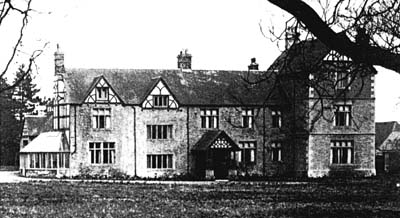
RBH Home
Maps & Travels
Articles
Legends
Towns & Villages
Castles & Houses
Churches
Biographies
Gentry
Family History
Odds & Ends
Mail David
 Barton
Court
Barton
CourtAbingdon, Berkshire
The origins of the manor of Barton may stem from the Roman estate which surrounded a busy villa excavated in the area. The place was one of the earliest granges of the Saxon Abingdon Abbey and, in the 12th century, provided its monastic landlord with five thousand six hundred eggs a year! The straw for the refectory floor was also supplied by Barton and the Abbey kitchener was able to claim three errand boys, and their horses, from the manor.
The old Abbot's Court was probably
built shortly after 1328 as the previous building was burnt to the ground
by . After the Dissolution of the Monasteries, it changed hands a few
times before being purchased by Thomas Reade in 1547. He, no doubt, built
himself a fine Tudor mansion. The family lived in the house - or at least
owned the manor - for the next two hundred and fifty years. While
staying in Abingdon, King Charles I was entertained, several times, at
Barton Court by Thomas' Royalist grandson and namesake. It was also at Barton
that Charles
said goodbye to his Queen for the last time, before her journey to Exeter
and France in April 1644. Though originally held by the Cavaliers during
the Civil War, the
nearby town of Abingdon was soon taken by the Roundheads. So Sir Thomas’ home was in
a precarious position. His grandson, Compton, had to defend the house with
great bravery until finally it "was burnt over his head," probably in
March 1646. Barton was in ruins at the close of the Civil War and the
Reades moved out to Shipton Court (Oxfordshire) did not return. Timbers from the house were reused in the nearby
Barton Court Farm, and these have revealed signs of fire and Cromwellian bullet holes! The
Bowyers from Radley Hall, who bought the manor in 1808, eventually built a replacement
mansion. This was pulled down in the 1970s to make way for the present
housing estate.
